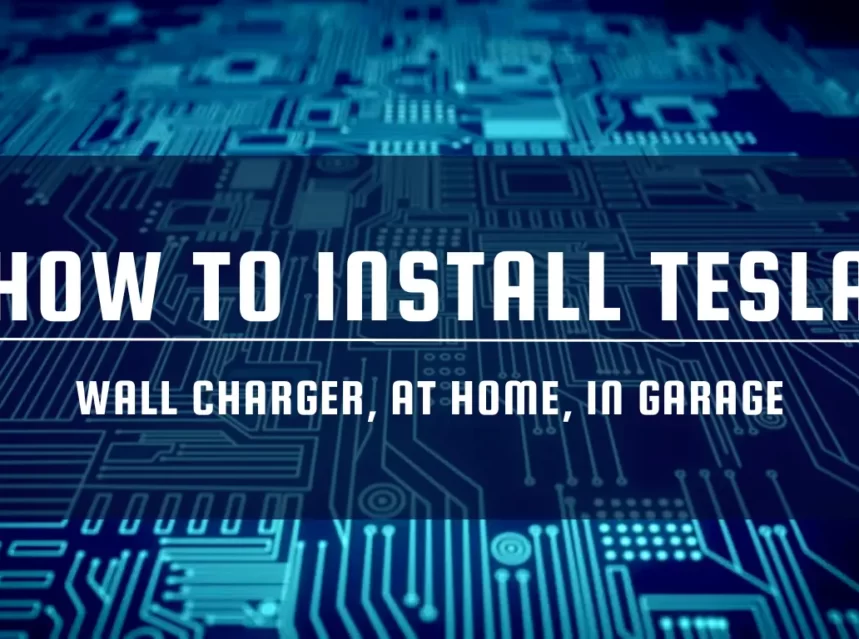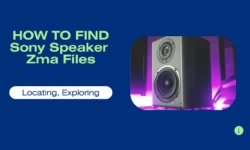How to Install Tesla Wall Charger, at Home, in Garage

Installing a Tesla Wall Charger is a straightforward process that can greatly enhance your electric vehicle charging experience. Whether you’re a new Tesla owner or looking to upgrade your charging setup, this guide will walk you through the essential steps to ensure a safe and efficient installation. By the end of this tutorial, you’ll have the knowledge and confidence to set up your Tesla Wall Charger at home, providing a convenient and reliable way to keep your electric vehicle ready for the road. “How to install Tesla Wall Charger”
Tesla Wall Charger Installation Guide
Introduction:
- Explain the importance of a Tesla Wall Charger for electric vehicle owners.
- Mention that the installation process can vary based on your electrical setup.
Materials Needed:
- List the tools and materials required for the installation, such as the Tesla Wall Charger, mounting hardware, electrical wiring, and necessary safety equipment.
Step 1: Pre-Installation Preparation:
- Turn off the power to the electrical panel.
- Determine the location for mounting the Tesla Wall Charger.
- Ensure the location complies with local building codes and regulations.
Step 2: Electrical Wiring:
- Explain how to safely connect the Tesla Wall Charger to your electrical panel.
- Provide guidance on wire sizing and the use of a dedicated circuit.
Step 3: Mounting the Tesla Wall Charger:
- Detail the steps for mounting the Tesla Wall Charger securely to the wall.
- Include any specific instructions provided by Tesla for your model.
Step 4: Connecting to Your Tesla Vehicle:
- Describe how to connect the Tesla Wall Charger to your Tesla vehicle.
- Highlight the importance of following Tesla’s recommended connection procedures.
Step 5: Powering Up:
- Explain how to restore power to the electrical panel.
- Check for any error indicators on the Tesla Wall Charger and troubleshoot if necessary.
Safety Precautions:
- Emphasize the importance of safety throughout the installation process.
- Provide tips on avoiding electrical hazards and ensuring a secure installation.
Conclusion:
- Summarize the key points of the installation process.
- Encourage readers to refer to their Tesla Wall Charger’s specific installation manual for detailed instructions.
Additional Resources:
- Include links to relevant Tesla support documentation or videos for further assistance.
Preparing the Required Tools and Materials
Before you begin the installation of your Tesla Wall Charger, it’s essential to gather all the necessary tools and materials. Having everything at hand will ensure a smoother and more efficient installation process. Here’s a list of what you’ll need:
Tools:
- Screwdriver Set: You’ll need various screwdrivers, both flathead and Phillips, for securing the charger and electrical components.
- Drill and Drill Bits: If you need to create holes for mounting, ensure you have the appropriate drill and bits.
- Voltage Tester: This tool helps you confirm that the power is turned off before working on electrical connections.
- Wire Stripper/Cutter: For preparing and cutting wires to the required length.
- Level: To ensure the Tesla Wall Charger is mounted perfectly level on the wall.
- Tape Measure: For accurate measurements during installation.
- Adjustable Wrench: To tighten nuts and bolts securely.
- Pliers: Useful for various tasks, including bending and securing wires.
- Safety Gear: Don’t forget personal protective equipment, such as safety glasses and gloves, to keep you safe during installation.
Materials:
Tesla Wall Charger: Ensure you have the Tesla Wall Charger unit itself, which should be included with your purchase.
Mounting Hardware: Check that you have all the necessary screws, anchors, and brackets for securely mounting the charger on the wall.
Electrical Wiring: Depending on your specific electrical setup, you may need wiring to connect the charger to your electrical panel.
Circuit Breaker: If you’re installing a dedicated circuit, ensure you have the appropriate circuit breaker rated for your charger’s requirements.
Conduit and Fittings: If required by local codes, you may need conduit and fittings for protecting and concealing the wiring.
Wire Connectors: These are essential for secure and safe electrical connections.
Wire Nuts: Used to join wires securely.
Wire Labels: To properly label wires for easy identification.
Mounting Template: Some Tesla Wall Chargers come with a mounting template for precise placement on the wall.
Owner’s Manual: Keep the Tesla Wall Charger’s owner’s manual and installation instructions readily available for reference.
Ensure that all tools and materials are in good working condition and that you have any additional items recommended by Tesla or required by local electrical codes. With everything ready, you’ll be well-prepared to proceed with the installation of your Tesla Wall Charger.
Selecting and Buying Tesla Wall Charger
When it comes to purchasing a Tesla Wall Charger for your electric vehicle, it’s essential to make an informed decision to ensure compatibility, safety, and convenience. Here’s a step-by-step guide to help you select and buy the right Tesla Wall Charger:
1. Determine Your Charging Needs:
Start by assessing your charging requirements. Consider factors like your daily driving distance, available charging time, and the electric vehicle model you own.
2. Check Compatibility:
Ensure that the Tesla Wall Charger you’re considering is compatible with your Tesla model. Tesla offers different charger models with varying power levels, so choose one that suits your vehicle’s charging capabilities.
3. Evaluate Electrical Capacity:
Assess your home’s electrical capacity to determine if it can support the Tesla Wall Charger you intend to install. Check your electrical panel’s rating and consult with an electrician if needed to ensure it can handle the charger’s power requirements.
4. Choose Charging Speed:
Tesla Wall Chargers are available in various power levels, which affect charging speed. Decide whether you need a standard charger or a high-power charger for faster charging times.
5. Select the Connector Type:
Tesla vehicles use a proprietary connector. Ensure that the Tesla Wall Charger you choose comes with the correct connector type for your Tesla model.
6. Review Additonal Features:
Consider any extra features that may enhance your charging experience, such as Wi-Fi connectivity for remote monitoring or a cable management system for tidier installations.
7. Read Reviews and Recommendations:
Look for customer reviews and recommendations online to gain insights into the performance and reliability of the Tesla Wall Charger you’re interested in.
8. Compare Prices:
Compare prices from authorized Tesla dealers, Tesla’s official website, and other reputable retailers. Keep an eye out for any discounts or promotions that may be available.
9. Warranty and Support:
Check the warranty offered by the manufacturer. Tesla typically provides a warranty for their Wall Chargers. Ensure you understand the terms and conditions of the warranty and the manufacturer’s support policies.
10. Consult with an Electrician:
– If you have any doubts about the installation or electrical requirements, consult with a licensed electrician. They can provide guidance and ensure the installation is done correctly and safely.
11. Make the Purchase:
– Once you’ve selected the Tesla Wall Charger that meets your needs, go ahead and make the purchase through an authorized dealer or Tesla’s official website.
By following these steps, you’ll be well-prepared to select and buy a Tesla Wall Charger that suits your electric vehicle and charging requirements. Remember that safety, compatibility, and quality should be your top priorities in making this important purchase.
Positioning the Wall Charger Unit
Selecting the right location for your Tesla Wall Charger is a crucial step in ensuring both convenience and safety during use. Follow these guidelines to position the Wall Charger unit effectively:
1. Choose a Suitable Wall Location:
Select a wall location that is easily accessible and provides enough space for your vehicle to park and charge. Ideally, it should be close to your Tesla’s charging port for a seamless connection.
2. Consider Cable Length:
Keep in mind the length of the charging cable that comes with your Tesla Wall Charger. Ensure it can comfortably reach your vehicle’s charging port without strain.
3. Check Local Codes and Regulations:
Consult local building codes and regulations to ensure compliance with any specific requirements for charger placement. Some codes may dictate minimum clearances from walls, electrical panels, or other structures.
4. Avoid Obstacles:
Clear the area around the Wall Charger of any obstructions, including vehicles, clutter, or objects that may obstruct access to the charger or pose a safety hazard.
5. Wall Mounting Height:
Tesla typically recommends mounting the Wall Charger unit at a height of around 48 inches (4 feet) from the ground to the center of the unit. However, follow the manufacturer’s specific guidelines for your model.
6. Level Installation:
Ensure that the Wall Charger unit is mounted level on the wall to facilitate a secure and proper connection to your Tesla vehicle.
7. Consider Future Expansion:
If you plan to purchase additional electric vehicles in the future, think about how the charger’s placement will accommodate multiple vehicles. Mounting it in a central location can be advantageous for this purpose.
8. Weather Protection:
If you live in an area with harsh weather conditions, consider installing the Wall Charger unit in a location that provides some protection from the elements, such as under a carport or awning.
9. Accessibility and Convenience:
Position the Wall Charger unit in a location that is convenient for your daily routine. It should be easily accessible for plugging and unplugging your vehicle without hassle.
10. Consider Aesthetics:
– While not a primary concern, you may want to consider the aesthetics of the installation. Some homeowners prefer a clean and unobtrusive look, while others may want the charger to blend in with the surroundings.
Before drilling holes or mounting the Wall Charger unit, double-check that the chosen location meets all the necessary criteria. Once you’re confident in your choice, you can proceed with the installation, ensuring that the Wall Charger is securely and correctly mounted in the desired position.
Making the Wall Charger Connection
Now that you’ve positioned your Tesla Wall Charger unit correctly, it’s time to make the necessary electrical connections to ensure safe and efficient charging. Follow these steps to establish the connection:
1. Turn Off the Power:
Before working with electrical connections, turn off the power to your home’s electrical panel. Locate the circuit breaker or fuse that controls the charger’s dedicated circuit and switch it off.
2. Identify Wiring:
Identify the electrical wiring you’ll be working with. You should have a dedicated circuit for the Wall Charger that includes the necessary wires (hot, neutral, and ground).
3. Prepare the Wires:
Strip the insulation from the ends of the wires to expose the copper conductors. Use the appropriate wire stripper tool for this task.
4. Connect the Wires:
Follow these steps for making the electrical connections:
Hot Wire (L1 or L2): Connect the hot wire from the Wall Charger to the corresponding hot wire in your electrical circuit.
Neutral Wire (N): Connect the neutral wire from the Wall Charger to the neutral wire in your electrical circuit.
Ground Wire (G): Connect the ground wire from the Wall Charger to the ground wire in your electrical circuit.
5. Use Proper Connectors:
Secure the wires using the appropriate connectors. For instance, use wire nuts for connecting wires of the same type (e.g., hot to hot, neutral to neutral) and ensure that the connections are tight and secure.
6. Double-Check Connections:
After making the connections, double-check that all wires are properly secured and insulated. There should be no exposed conductors.
7. Mount the Wall Charger:
Ensure that the Wall Charger unit is securely mounted on the wall, following the guidelines provided in the installation manual. The unit should be level and firmly attached.
8. Restore Power:
Once all connections are made and verified, return to the electrical panel and switch on the circuit breaker or replace the fuse to restore power to the Wall Charger.
9. Test the Charger:
Verify that the Wall Charger is operational by connecting it to your Tesla vehicle. Ensure that the vehicle recognizes the charger and begins charging.
10. Monitor for Errors:
– Keep an eye on the Wall Charger for any error indicators or unusual behavior. Consult the Wall Charger’s manual or Tesla support if you encounter any issues.
11. Safety Precautions:
– Throughout the process, prioritize safety. Wear appropriate personal protective equipment, and be cautious when handling electrical components.
12. Seek Professional Help if Necessary:
– If you are uncomfortable with any aspect of the electrical connection process, or if you encounter any electrical issues, do not hesitate to seek assistance from a licensed electrician.
By following these steps carefully, you’ll establish a safe and reliable electrical connection for your Tesla Wall Charger, ensuring that it functions correctly and efficiently.
Tips for Troubleshooting Wall Charger Issues
While Tesla Wall Chargers are designed to be reliable and efficient, occasional issues may arise during installation or operation. Here are some troubleshooting tips to help you address common Wall Charger problems:
1. No Power to the Charger:
If the Wall Charger does not power on after installation, check the following:
- Ensure that the circuit breaker or fuse for the charger’s dedicated circuit is switched on.
- Verify that there is power at the electrical panel by testing other nearby outlets or circuits.
- Inspect the Wall Charger’s wiring connections to ensure they are secure and correctly installed.
2. Slow Charging or No Charging:
If your Tesla is not charging or charging at a slower rate than expected, consider the following:
- Check the charging cable for any damage or wear and tear. Replace it if necessary.
- Verify that the vehicle’s charging port and the Wall Charger connector are clean and free of debris.
- Ensure that your Tesla is not set to limit charging or on a reduced charging schedule in the vehicle settings.
3. Error Indicators on the Charger:
- If the Wall Charger displays an error indicator or flashing lights, consult the charger’s manual for error code explanations. Common error codes typically include overcurrent, ground faults, or temperature-related issues.
- If you can’t resolve the issue based on the error code, contact Tesla’s customer support or refer to the Wall Charger’s support documentation.
4. Wi-Fi Connectivity Issues:
If your Wall Charger has Wi-Fi connectivity for remote monitoring and it’s not connecting to your network:
- Ensure that your Wi-Fi network is functioning correctly.
- Check if the Wall Charger is within the Wi-Fi range and that it has the correct network credentials.
- Follow the Wall Charger’s instructions for connecting to Wi-Fi, including any reset procedures.
5. Vehicle Not Recognizing Charger:
If your Tesla vehicle does not recognize the Wall Charger when plugged in:
- Make sure the charger connector is fully inserted into the vehicle’s charging port.
- Check for any obstructions or debris in the charging port and clean it if necessary.
- Ensure that the Wall Charger is operational by testing it with another Tesla vehicle if possible.
6. Consult Manufacturer Resources:
- Refer to the Wall Charger’s owner’s manual and installation instructions for troubleshooting guidance specific to your model.
- Visit the Tesla website or contact Tesla’s customer support for additional troubleshooting resources and assistance.
7. Safety Precautions:
- Always prioritize safety when troubleshooting. Avoid making any modifications or repairs to the Wall Charger beyond what is outlined in the manufacturer’s documentation. If you are unsure about a particular issue, seek professional assistance from Tesla or a qualified electrician.
8. Regular Maintenance:
- Consider a routine maintenance schedule to inspect and clean your Wall Charger and its components. This can help prevent potential issues and ensure consistent performance.
By following these troubleshooting tips, you can address common Wall Charger issues and ensure that your charging setup remains reliable and efficient.



